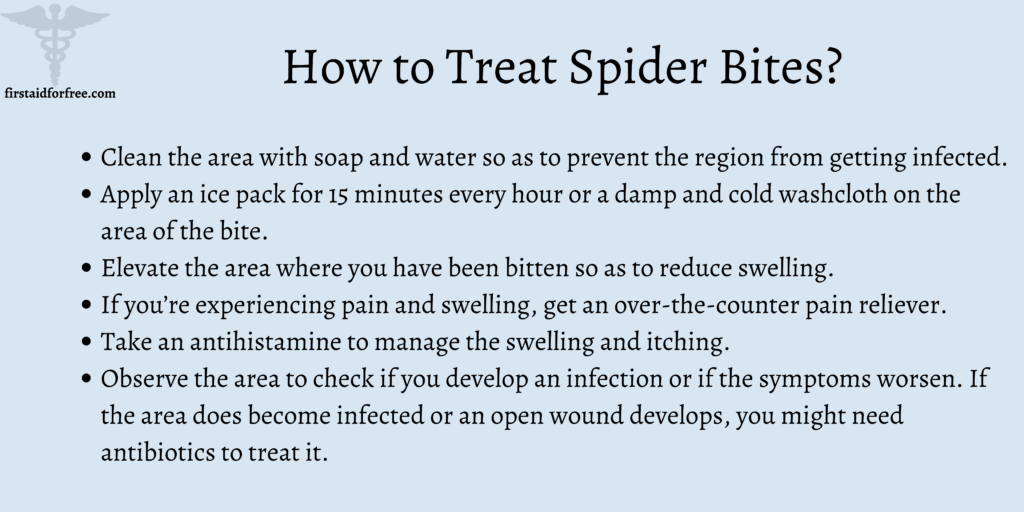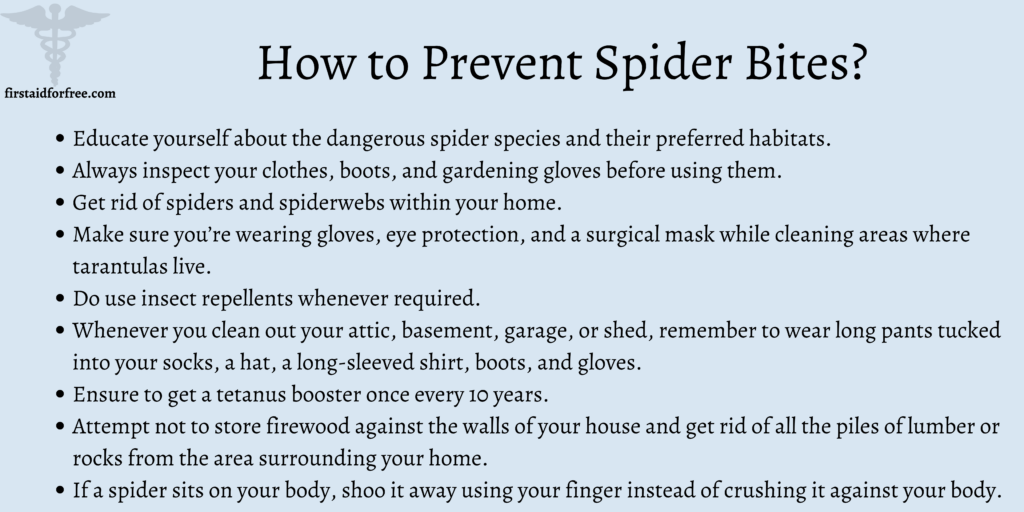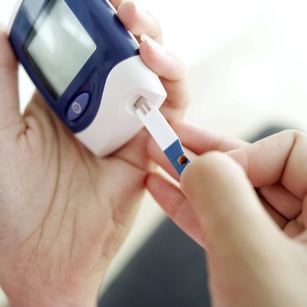First Aid for Spider Bites: 6 Quick and Effective Steps
Did you know that there are more than 3500 spiders that one can find in the United States? While most of them are not dangerous, the two dangerous species of spiders to know about are the recluse and the widow.
Spiders bite human beings very rarely. While all of them produce venom or poison, most spiders have small fangs that can’t puncture the skin of humans.
The signs of spider bites are often quite similar to skin sores or bug bites, which is why it’s often difficult to determine if the wound was due to a spider bite or not.
With over 50,000 spider species known to exist in the world, it’s important to make yourself aware of the first aid for spider bites so that you can help a loved one in need if the situation ever arises.
I recall an incident from my childhood when I’d gone on a hiking trip with my family members, and my cousin got bit by a spider. Fortunately, my uncle knew just what to do and how to treat it well.
Have you ever wondered what the symptoms of spider bites are or the dangerous spiders to be aware of?
If the answer to these questions is a yes, then this article is for you. We’ll be discussing the signs of spider bites, the species to be careful of, how to treat and prevent them, and when you should see a doctor.
What are the Symptoms of a Spider Bite?
Spider bites usually look like any other bug bite. The area appears inflamed and red and could be like an itchy or painful bump on the skin. One may not even realize the symptoms if the bite is from a harmless spider.
The bite from a recluse spider or widow spider, though, could lead to serious symptoms. The signs associated with a bite from a widow spider are as follows:
- Cramping
- Pain and redness
- Swelling
- Vomiting and nausea
- Tremors
- Sweating
The symptoms of a bite from a recluse spider are:
- Fever and chills
- Body ache
- Pain which keeps increasing after the first eight hours following the bite
- The wound growing into an ulcer and the skin around it dying
- The wound having a pale center which then turns purple or dark blue and is surrounded by a red ring
Dangerous Spiders to be Aware Of
The two dangerous spider species to be aware of include:
Black widows
- These spiders have a visible red hourglass shape in the tummy area.
- They can mostly be found in the Southern and Western United States.
- They are usually present in outhouses, fences, building overhangs, and woodpiles.
Brown recluses
- These spiders are also known as fiddleback or violin spiders.
- The distinct feature of their physical appearance is that their heads have a violin-shaped, dark mark.
- They live in the Southern and Midwestern states.
- They prefer to inhabit sheltered and dry areas, including leaves, rocks, and piles of wood.
- When living indoors, they can usually be found in shoes, attics, and dark closets.
How to Treat Spider Bites?
If you believe that you have been bitten by a dangerous spider species, you should contact your doctor right away. In case the bite was from a species whose bite isn’t harmful, then take the following steps as first aid to treat the bite at home:
- Clean the area with soap and water so as to prevent the region from getting infected.
- Apply an ice pack for 15 minutes every hour or a damp and cold washcloth on the area of the bite.
- Elevate the area where you have been bitten so as to reduce swelling.
- If you’re experiencing pain and swelling, get an over-the-counter pain reliever.
- Take an antihistamine to manage the swelling and itching.
- Observe the area to check if you develop an infection or if the symptoms worsen. If the area does become infected or an open wound develops, you might need antibiotics to treat it.
How to Prevent Spider Bites?
Spiders could be present in the ambience around you, be it in an outdoor space, your yard, or even your workplace. The following are some of the tips to remember so as to reduce the risk of spider bites:
- Educate yourself about the dangerous spider species and their preferred habitats.
- Always inspect your clothes, boots, and gardening gloves before using them.
- Get rid of spiders and spiderwebs within your home.
- Make sure you’re wearing gloves, eye protection, and a surgical mask while cleaning areas where tarantulas live.
- Do use insect repellents whenever required.
- Whenever you clean out your attic, basement, garage, or shed, remember to wear long pants tucked into your socks, a hat, a long-sleeved shirt, boots, and gloves.
- Ensure to get a tetanus booster once every 10 years.
- Attempt not to store firewood against the walls of your house and get rid of all the piles of lumber or rocks from the area surrounding your home.
- If a spider sits on your body, shoo it away using your finger instead of crushing it against your body.
When to See a Doctor?
Here are the following situations where you should contact your healthcare provider:
- You were bitten by a dangerous spider species.
- You’re having difficulty breathing.
- You’re experiencing severe headaches or vision problems.
- You’re facing heart palpitations or other heart issues.
- There are signs of infection, such as yellow discharge from the area of the spider bite or fever.
- You’re experiencing vomiting and nausea.
- You have cramps, severe muscle pain, or are experiencing paralysis or weakness.
- You lose consciousness.
FAQs
How do you know if a bite is from a spider?
A spider bite resembles a bug bite in many ways, as it will look like a red and inflamed bump on your skin which will mostly be painful or itchy.
Should I worry about a spider bite?
If you get bitten by a spider, seek medical care right away if the area begins to look infected or if you get bitten by one of the dangerous species.
Are spider bites poisonous?
Most spider bites are harmless, and the symptoms fade away in a couple of days. Visit a clinic immediately if you get bitten by a black widow or brown recluse spider.
Do spider bites burn?
Yes, spider bite can burn.
What are the stages of a spider bite?
Once a spider bites you, you will experience numbness and pain for the first 15 minutes. After an hour, the area will turn red, and it will become swollen and hardened within eight hours. You could see a discharge of fluids from the region, and it will eventually turn black after 24 to 26 hours.
Conclusion
In the United States, most kinds of spiders don’t bite human beings. With their mouths being small, their fangs aren’t powerful enough to pierce a person’s skin. While some spiders do bite, their venom doesn’t cause a life-threatening reaction.
There are a couple of spider species, though, whose bites can be serious and harmful. These include the black widow and brown recluse spider, and if you know someone who gets bitten by one of these, contact the emergency medical services immediately if they develop any worrying symptoms.







